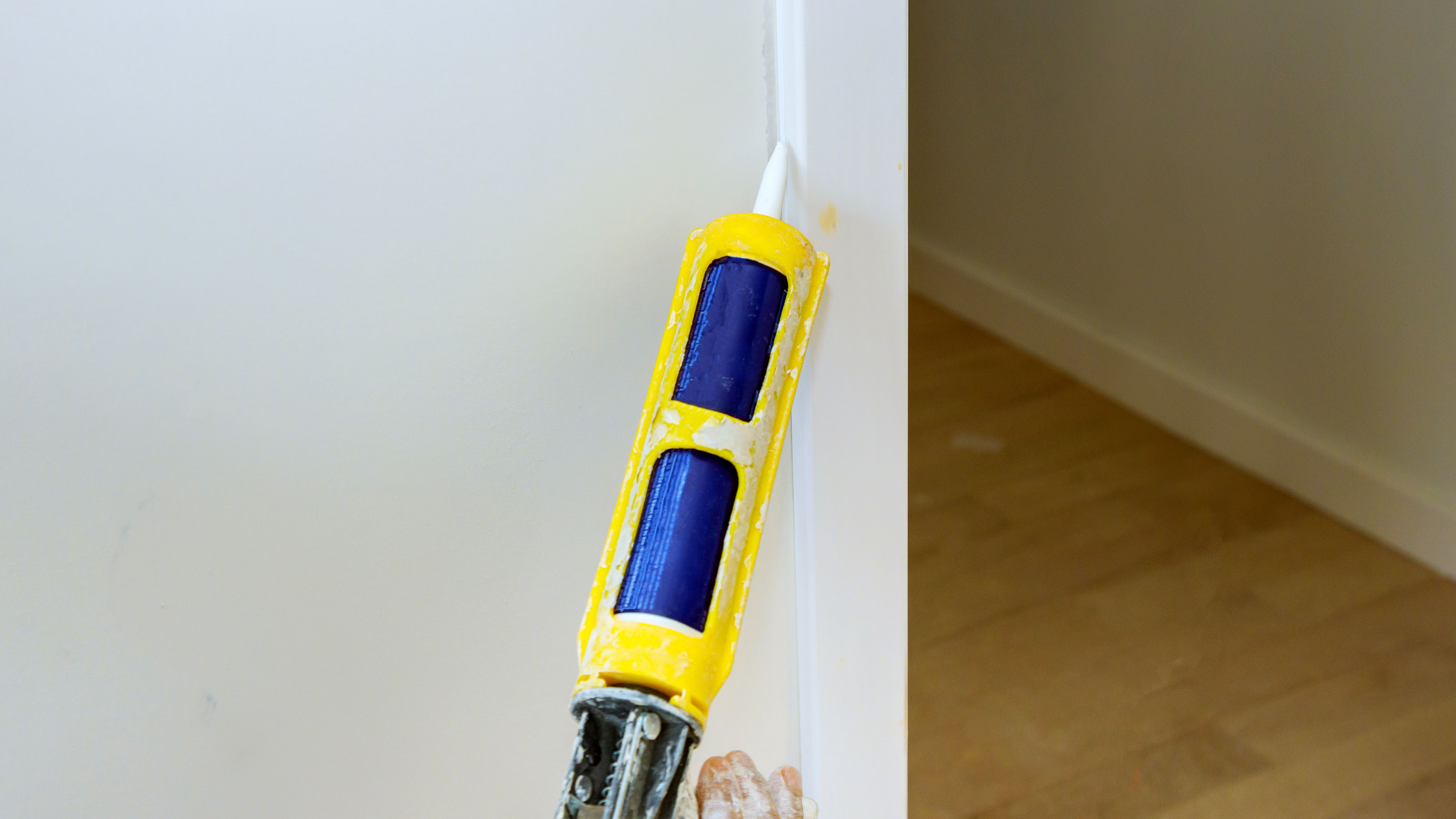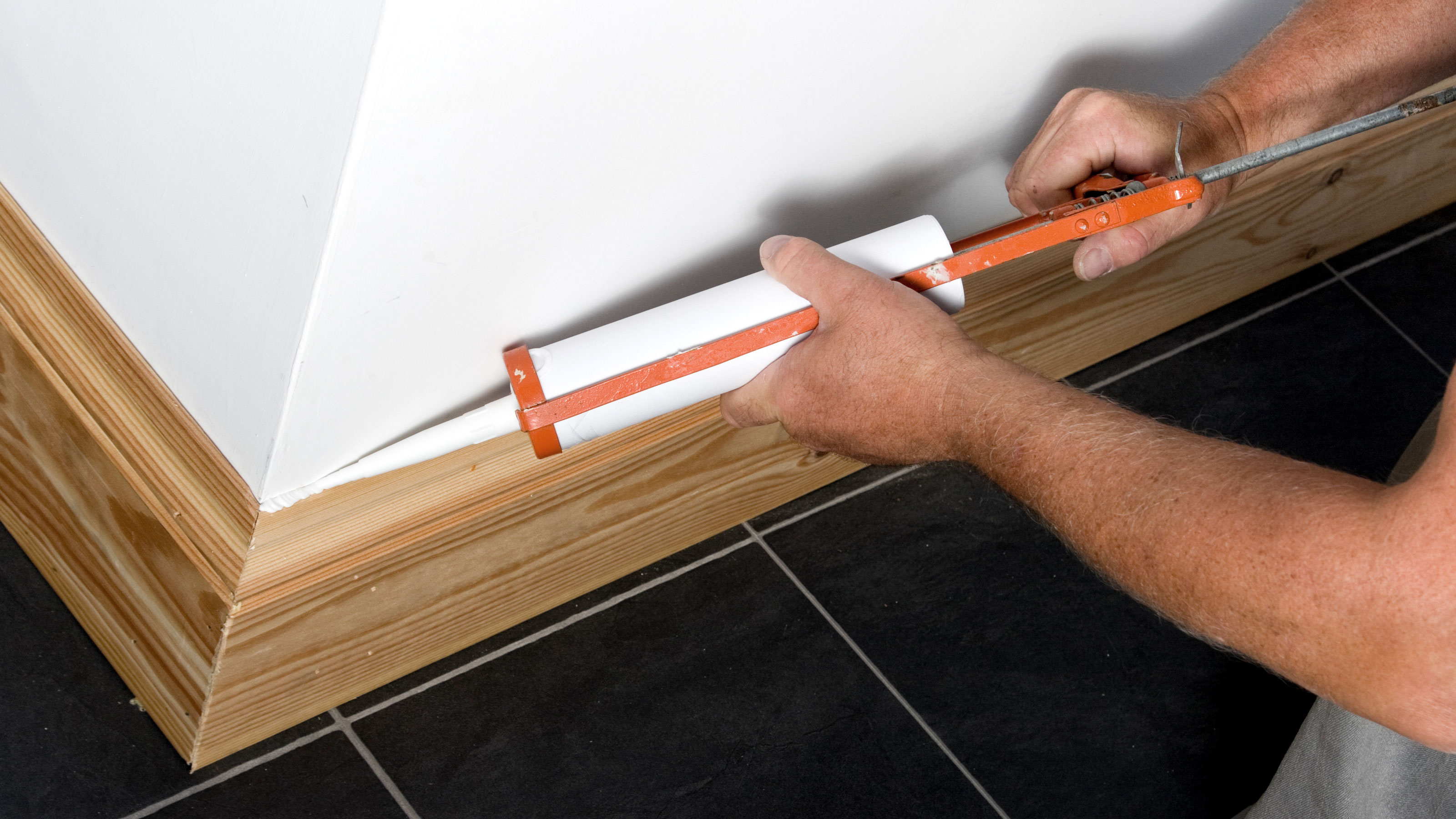Caulk before or after painting? We reveal which way is best
Should you apply caulk before or after painting? It’s a simple question, but it has more than one answer. Here we delve into when you should paint and why

Want to know whether to caulk before or after painting? If you’re decorating a room, caulk is going to be a key component for adding finishing touches. But get the caulk/paint order wrong you could be spoiling the finished look.
Here we tell you when you should be caulking and when you should be painting to get the best looking and most effective finish.
Caulk before or after painting? When to paint woodwork when decorating a room
When it comes to painting skirting boards, windows and doors you typically caulk first as Michael Rolland, DIY expert at The Paint Shed reveals. “In general, you caulk the woodwork before, if the caulk line will be visible once the job is complete and paint is dry, this includes caulk linked around windows and doors.”
But why? “Applying caulk first before will allow you to hide the caulk with the paint. You should always allow the caulk to dry for at least an hour before any paint or stain is applied.” However certain scenarios allow you to apply after as Roland explains: “Caulk can however be applied after painting if it is hidden by trim or molding.”

Can you paint over caulk?
Yes you can. Caulk and silicone both are sealants, but are often confused — and you need to be using the right one for painting.
When it comes to caulk v silicone you need to be looking for decorators' or painters' caulk like SX Siroflex Premium Trade Strength Decorators Painters Caulk from Amazon. Painters'/decorators' caulk contains less silicone, which allows paint to adhere to it.
Why is it important to caulk woodwork when decorating a room?
Caulk is a flexible waterproof sealant and is the ideal filler for small gaps that appear around door frames, windows frame and skirting boards. Caulking skirting boards will stop any water getting behind them and getting into the walls and ruining the plaster.
Caulking windows, doors and trim will stop any unsightly holes and draughts — making your home more energy efficient and giving a neat attractive even finish between walls and trim.
Will a painter and decorator undertake caulking for you?
It's a relatively simple job for a painter and decorator and they will be more than happy to do a caulking job for you. However, this will add to the cost to paint a room. It will also add more time to the job. Speak to your tradesperson before they start and see what they say about cost and time.
What happens if you get the paint/caulk order the wrong way round?
Applying caulk after painting has its downsides as DIY expert Roland explains: “If the caulk is applied after, it can result in a messy finish. Applying caulk before allows for it to be covered up with the paint of your choice. If you paint the surface before caulking it, the caulk could discolour and change the look and feel of your paint.”
If you do get it wrong then there is a process to follow. “To repair a poor caulking job, it’s important to start with a clean slate," advises Roland. "This means you must remove the old layer of caulking. To do so, run a razor knife along both the top and bottom seal, as close as you can get to the line between the caulk and the surface."
He continues: "From there, take a putty knife and attempt to scrape the entire caulk line out in one piece. This will save you time scraping off a small piece at a time. Once you have removed the caulk line, thoroughly clean the surface with diluted bleach and let it completely dry before beginning a new caulking job.”
An alternative option is to use a specialist caulk removal tool, but make sure to read our do silicone removal tools really work? guide before you decide.
Get the Homebuilding & Renovating Newsletter
Bring your dream home to life with expert advice, how to guides and design inspiration. Sign up for our newsletter and get two free tickets to a Homebuilding & Renovating Show near you.
Steve Jenkins is a freelance content creator with over two decades of experience working in digital and print and was previously the DIY content editor for Homebuilding & Renovating.
He is a keen DIYer with over 20 years of experience in transforming and renovating the many homes he has lived in. He specialises in painting and decorating, but has a wide range of skills gleaned from working in the building trade for around 10 years and spending time at night school learning how to plaster and plumb.
He has fitted kitchens, tiled bathrooms and kitchens, laid many floors, built partition walls, plastered walls, plumbed in bathrooms, worked on loft conversions and much more. And when he's not sure how to tackle a DIY project he has a wide network of friends – including plumbers, gas engineers, tilers, carpenters, painters and decorators, electricians and builders – in the trade to call upon.

